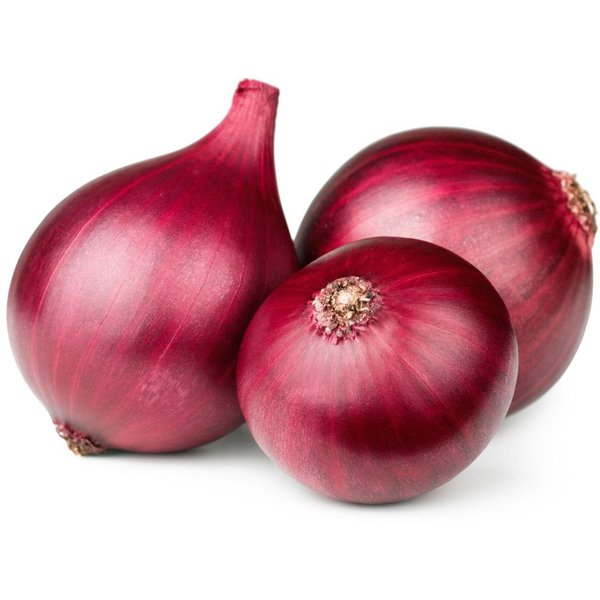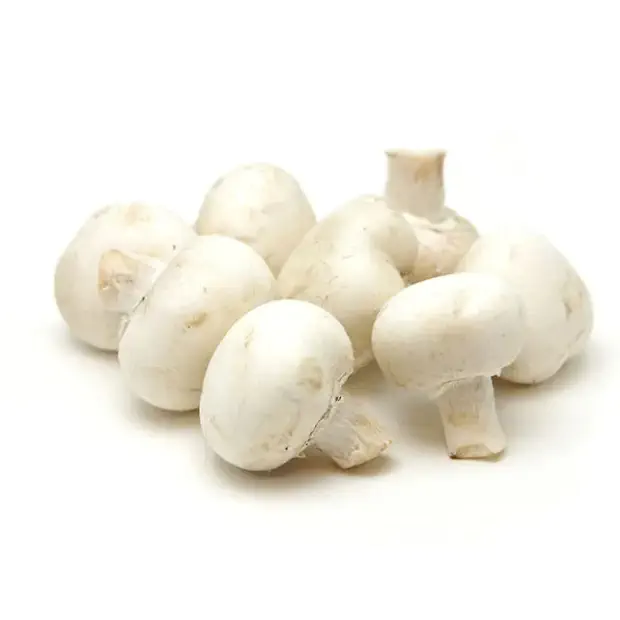The number 479 might seem ordinary at first glance. But it holds more than you think.
Numbers often have hidden meanings and fascinating stories. The number 479 is no different. From its mathematical properties to its appearance in history and culture, 479 is worth exploring. Whether you’re a math enthusiast, a history buff, or just curious, diving into the details of 479 can be intriguing.
This blog post will uncover the significance and interesting facts about 479. You’ll discover why this number stands out and how it connects to various fields. So, let’s begin our journey into the world of 479 and see what makes it special.

Credit: en.wikipedia.org
Keyword Research
Keyword research is the cornerstone of any successful SEO strategy. It’s about finding the right words that people are searching for and using them to attract your target audience. The right keywords can make or break your website’s visibility on search engines. So, how do you find these golden keywords? Let’s dive into two crucial components of keyword research.
Finding High-volume Keywords
High-volume keywords are the terms that a large number of people search for. These are the words and phrases that can drive significant traffic to your website. To find them, you can use tools like Google Keyword Planner, Ahrefs, or SEMrush.
Start by brainstorming a list of terms related to your niche. Think about what your ideal customers might type into the search bar. For example, if you run a fitness blog, terms like “weight loss tips” or “home workout routines” might be relevant.
Next, use one of the keyword research tools to see how often these terms are searched. Look for keywords with a high search volume but moderate competition. These are your sweet spots. They indicate a high interest but aren’t too difficult to rank for.
Have you ever thought about the questions your audience might have? Questions often make great high-volume keywords because people turn to search engines for answers. Try using a tool like AnswerThePublic to discover what questions are being asked in your niche.
Analyzing Competitor Keywords
Why reinvent the wheel when you can learn from your competitors? Analyzing competitor keywords is a smart strategy that can reveal opportunities you might have missed.
First, identify your main competitors. Who is ranking well for the keywords you want to target? Using tools like Ahrefs or SEMrush, you can see what keywords these sites are ranking for. This can give you insights into what’s working for them and how you can adapt these keywords for your own content.
Look at the keywords that bring the most traffic to your competitors. Are there any gaps you can fill? Maybe there’s a keyword they haven’t fully optimized for or a topic they haven’t covered in-depth. These are your opportunities.
One personal insight I’ve found valuable is to pay attention to the long-tail keywords your competitors are using. Long-tail keywords are more specific and usually have lower competition. They may not drive as much traffic individually, but they can add up and bring highly targeted visitors to your site.
Have you ever noticed that some content just keeps popping up in your searches? That’s because it’s well-optimized for keywords. By analyzing why it ranks well, you can apply similar strategies to your content.
So, what’s stopping you from diving into keyword research? It’s an essential step to improve your SEO and drive more traffic to your site. Start finding those high-volume keywords and analyzing what your competitors are doing. You’ll be amazed at the insights you uncover and how they can propel your content strategy forward.
On-page Optimization
On-Page Optimization is vital for improving your website’s visibility and ranking on search engines. By refining various elements directly on your web pages, you can enhance user experience and make your site more appealing to search engines. Let’s dive into the specifics of optimizing your meta tags and improving content quality.
Optimizing Meta Tags
Meta tags are snippets of text that describe a page’s content; they don’t appear on the page itself but only in the page’s code. Optimizing meta tags is crucial for search engine optimization (SEO). Here’s how you can do it:
- Title Tags: Craft compelling and concise title tags. They should include relevant keywords and be under 60 characters. For instance, “Buy Affordable Running Shoes | Shop Now” is more effective than “Running Shoes for Sale.”
- Meta Descriptions: Write informative and engaging meta descriptions. They should be between 150-160 characters and include a call to action. A well-written meta description can significantly increase your click-through rate. Think about what might make you click on a link!
- Header Tags: Use header tags (H1, H2, H3) to structure your content. They help search engines understand the hierarchy and importance of your content. Ensure that your H1 tag is unique to each page and contains your primary keyword.
Have you ever noticed that some search results are more appealing than others? That’s the power of optimized meta tags. Make yours stand out!
Improving Content Quality
High-quality content is key to engaging your audience and improving your SEO. Focus on providing value and answering your audience’s questions. Here are some practical tips:
- Relevance: Ensure your content is relevant to your audience. Address their needs and interests. For example, if you run a fitness blog, write about the latest workout trends or nutrition tips.
- Originality: Avoid duplicate content. Search engines favor unique content. Share your personal experiences or insights. When I started my blog, sharing my journey made my posts more relatable and engaging.
- Readability: Write in a clear and concise manner. Break up your text with paragraphs, bullet points, and images. Ask yourself, “Would I enjoy reading this?”
- Keyword Integration: Incorporate keywords naturally. Overstuffing keywords can harm your ranking. Instead, use them where they fit organically.
Think about the last time you read a blog post that kept you hooked from start to finish. What made it so engaging? Aim to create that experience for your readers with high-quality content.
On-page optimization is not just about making your site search-engine-friendly; it’s about creating a better experience for your visitors. Start optimizing today, and watch your website soar in rankings and user satisfaction.
Technical Seo
Technical SEO is about improving the technical aspects of your website to boost search engine rankings. It involves optimizing site speed, fixing broken links, and ensuring your site is mobile-friendly. Let’s dive into some key areas of technical SEO that can significantly impact your site’s performance.
Enhancing Site Speed
Site speed is crucial for user experience. A slow-loading site frustrates visitors and leads to higher bounce rates. Search engines like fast sites too. To enhance site speed, you can optimize images by compressing them without losing quality. Minimize CSS, JavaScript, and HTML files to reduce load times. Utilize browser caching to store files locally on users’ devices. This speeds up loading for repeat visitors.
Use tools like Google PageSpeed Insights to identify and fix speed issues. A faster site improves user satisfaction and search engine rankings.
Fixing Broken Links
Broken links hurt user experience and SEO. They lead to error pages, which frustrate visitors. Regularly check your site for broken links. Use tools like Screaming Frog or Google Search Console. Fix or remove broken links to ensure a smooth user journey. Replace them with relevant, working links. This not only improves user experience but also maintains your site’s authority and credibility.
Technical SEO may seem complex, but focusing on key areas like site speed and broken links can make a significant impact. Keep these elements in check to improve your site’s performance and search engine rankings.
Content Marketing
Content marketing plays a vital role in today’s digital landscape. It helps businesses build brand awareness and engage with their audience. High-quality content drives traffic and converts visitors into loyal customers. Let’s explore how to create engaging content and utilize user-generated content effectively.
Creating Engaging Content
Creating engaging content requires understanding your audience. Start with thorough research. Know their interests and pain points. This helps tailor your content to their needs. Use storytelling to make your content relatable. Stories captivate and hold the reader’s attention. Incorporate visuals like images and videos. They make the content more appealing. Break up text with headings and bullet points. This improves readability and keeps the audience engaged.
Utilizing User-generated Content
User-generated content (UGC) is a powerful tool. It adds authenticity to your brand. Encourage customers to share their experiences. This could be through reviews, testimonials, or social media posts. Feature these on your website or blog. It builds trust and strengthens your brand’s credibility. UGC also fosters community. People feel valued and more connected to your brand. Always give credit to the original creators. This encourages more users to contribute.
Link Building
Link building is crucial for SEO. It helps improve your website’s visibility. High-quality backlinks from reputable sites boost your search engine rankings.
Search engines see these links as votes of confidence. They show that your content is valuable and trustworthy. Let’s explore some effective link-building strategies.
Earning Backlinks
Earning backlinks is all about creating valuable content. Content that people want to share. Think about what your audience needs. Create guides, infographics, and informative articles. Share your content on social media and forums. Reach out to influencers in your industry. They may link to your content if they find it useful.
Another way to earn backlinks is through resource pages. These pages list valuable resources on a specific topic. Find resource pages in your industry. Suggest your content as a helpful addition. Make sure your content is high-quality and relevant.
Guest Blogging
Guest blogging involves writing articles for other websites. Choose websites in your niche. This strategy helps you reach a new audience. It also earns you valuable backlinks. Research blogs that accept guest posts. Read their guidelines carefully. Pitch your ideas in a professional manner.
When writing a guest post, focus on providing value. Avoid overly promotional content. Include a link to your website in your author bio. This link will help drive traffic to your site. It also improves your site’s authority.

Credit: www.allareacodes.com
Local Seo
Local SEO helps businesses attract customers in their local area. It’s crucial for small businesses that rely on local clientele. By optimizing your online presence, you can improve visibility and attract more local customers.
Optimizing Google My Business
Google My Business is key for local SEO. Create a detailed profile with your business name, address, and phone number. Ensure this information matches your website. Add photos to make your profile more attractive. Choose the right categories for your business. This helps Google show your business for relevant searches. Update your profile regularly with new posts and offers.
Managing Online Reviews
Online reviews impact your local SEO. Encourage satisfied customers to leave positive reviews. Respond to all reviews, both positive and negative. This shows you care about customer feedback. Address negative reviews politely and offer solutions. Reviews help build trust and improve your search ranking. Regularly monitor review sites to stay on top of your reputation.
Social Media Integration
Integrating social media into your online presence can boost visibility and engagement. Sharing content across platforms helps reach a wider audience. Connecting profiles creates a seamless user experience.
Social Media Integration Integrating social media into your online presence is no longer an optional extra; it’s essential. It’s the bridge that connects you with a broader audience and enhances your online visibility. But how do you make social media work for you? Let’s delve into the specifics.Leveraging Social Signals
Social signals play a crucial role in how search engines rank your website. These signals include likes, shares, comments, and overall engagement on your social media posts. They indicate to search engines that your content is relevant and valuable. Imagine your latest blog post gets shared multiple times on Facebook and retweeted by influential figures in your niche. This level of engagement not only drives traffic to your site but also boosts your search engine ranking. Tip: Focus on creating engaging content that encourages your audience to interact. Pose questions, create polls, and encourage shares. This will amplify your social signals and enhance your SEO.Creating Shareable Content
Creating content that people want to share is both an art and a science. Think about your own social media habits. What makes you hit that share button? Here are some practical tips: – Visual Appeal: Use eye-catching images and infographics. Posts with visuals are more likely to be shared. – Value: Ensure your content adds value. Whether it’s informative, entertaining, or inspirational, it should resonate with your audience. – Emotion: Content that evokes strong emotions—be it laughter, awe, or even anger—is more likely to be shared. One personal insight: I once wrote a blog post about a minor personal struggle and how I overcame it. It was honest and relatable, and to my surprise, it got shared widely. It reminded me that authenticity can be a powerful tool. Question for you: What kind of content resonates most with your audience? Understanding this can help you create more shareable content. Incorporate these strategies, and you’ll see your social media integration efforts pay off in no time. By leveraging social signals and creating shareable content, you enhance your online presence and engage with your audience more effectively. So, what’s your next step in integrating social media into your strategy?Analytics And Tracking
Analytics and tracking are crucial for understanding user behavior on your website. They help in making data-driven decisions. The insights gained can significantly boost your site’s performance and user experience.
Utilizing Google Analytics
Google Analytics is a powerful tool for tracking website activity. It provides detailed reports on user behavior. You can see how visitors interact with your site. This data helps identify which pages perform well. It shows where improvements are needed.
Setting up Google Analytics is straightforward. First, create an account. Then, add the tracking code to your website. This code collects data on user interactions. Google Analytics also offers customization options. You can set goals to track specific actions. For instance, you might want to monitor form submissions. This level of detail is invaluable.
Tracking Conversion Rates
Conversion rates measure the percentage of visitors who complete a desired action. This could be making a purchase or signing up for a newsletter. Tracking conversions is essential for evaluating the success of your marketing efforts. It helps you understand what works and what doesn’t.
To track conversion rates, define what a conversion is for your site. Then, use Google Analytics to set up conversion tracking. This involves setting goals and defining the criteria for a conversion. For example, a completed purchase can be a conversion. Monitoring these rates regularly helps in making informed decisions.
Improving conversion rates often requires testing different strategies. This could involve changing your call-to-action or simplifying your checkout process. Regular analysis and adjustments can lead to better results over time.

Credit: prime-numbers.fandom.com
Frequently Asked Questions
What State Is 479 Area Code?
The 479 area code is for the state of Arkansas. It covers cities like Fort Smith, Fayetteville, and Springdale.
What Area Code Is 479 In California?
Area code 479 is not in California. It is actually located in the state of Arkansas.
What Is The Meaning Of 479?
The meaning of 479 varies by context. It can be a number, area code, or a specific reference.
What Is The Area Of 479?
The area of 479 is not clear without specific context. If you mean a numerical value squared, it’s 479 squared. For a location or specific object, please provide more details.
Conclusion
Understanding 479 can boost your knowledge and confidence. This number holds significance in various contexts. Embrace its role in your daily life. Simple steps can lead to meaningful insights. Keep exploring and learning about 479. Small actions often make a big impact.
Stay curious and motivated. Your journey with 479 can be rewarding. Enjoy discovering its potential.
{ “@context”: “https://schema.org”, “@type”: “FAQPage”, “mainEntity”: [ { “@type”: “Question”, “name”: “What state is 479 area code?”, “acceptedAnswer”: { “@type”: “Answer”, “text”: “The 479 area code is for the state of Arkansas. It covers cities like Fort Smith, Fayetteville, and Springdale.” } } , { “@type”: “Question”, “name”: “What area code is 479 in California?”, “acceptedAnswer”: { “@type”: “Answer”, “text”: “Area code 479 is not in California. It is actually located in the state of Arkansas.” } } , { “@type”: “Question”, “name”: “What is the meaning of 479?”, “acceptedAnswer”: { “@type”: “Answer”, “text”: “The meaning of 479 varies by context. It can be a number, area code, or a specific reference.” } } , { “@type”: “Question”, “name”: “What is the area of 479?”, “acceptedAnswer”: { “@type”: “Answer”, “text”: “The area of 479 is not clear without specific context. If you mean a numerical value squared, it’s 479 squared. For a location or specific object, please provide more details.” } } ] }




